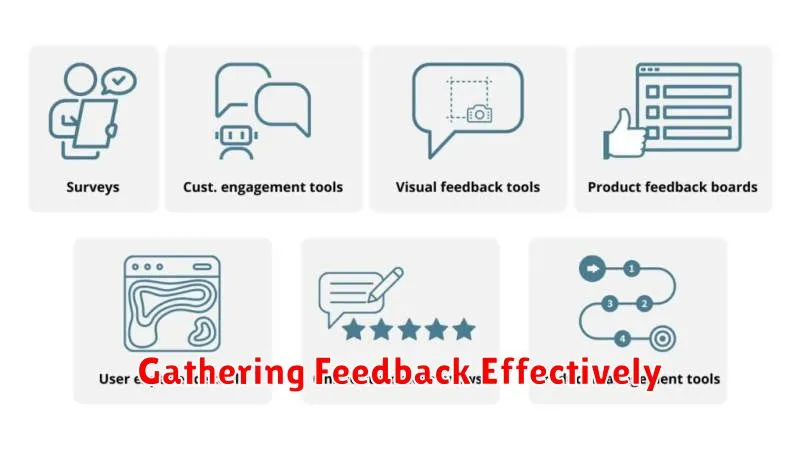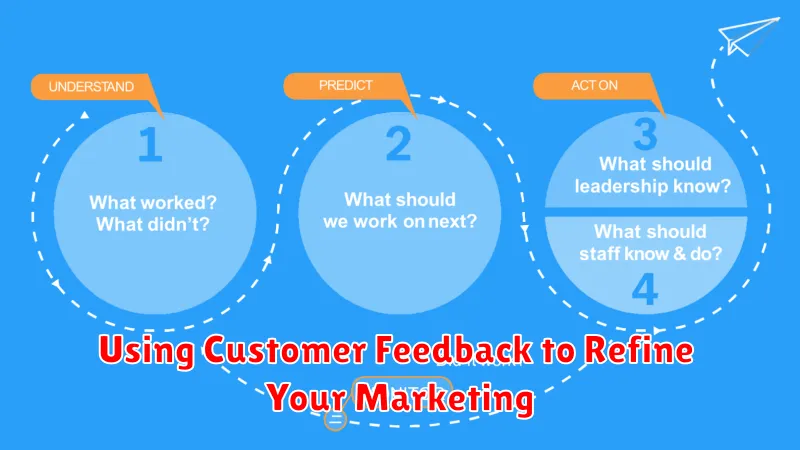In today’s competitive market, understanding your customer is paramount. Customer feedback provides invaluable insights into their needs, preferences, and pain points. Leveraging this feedback to refine your marketing strategies is crucial for maximizing your reach and impact. By actively listening to your customers, you can tailor your marketing efforts to resonate with their specific expectations, resulting in increased engagement, conversions, and ultimately, business growth. This article will explore the importance of customer feedback and provide actionable steps for effectively integrating it into your marketing processes.
From analyzing online reviews to conducting surveys and focus groups, there are numerous ways to collect customer feedback. Understanding how to effectively gather, analyze, and apply this feedback to refine your marketing is essential for any successful business. By focusing on customer feedback, you can create marketing campaigns that are more targeted, relevant, and effective. This article will delve into various methods of collecting customer feedback and provide practical guidance on how to use it to refine your marketing strategies for optimal results.
Why Customer Feedback is Critical
In today’s competitive market, understanding your customers is paramount. Customer feedback provides critical insights into their needs, preferences, and pain points. This information is essential for refining your marketing strategies and achieving sustainable growth.
Effective marketing relies on connecting with your target audience. Feedback helps bridge the gap between your perceived customer needs and their actual experiences. By actively listening to your customers, you can tailor your messaging, product development, and overall customer experience to meet their expectations.
Ignoring customer feedback can lead to missed opportunities and even business failure. Customers who feel unheard are likely to switch to competitors who demonstrate a greater understanding of their needs. Proactive solicitation and analysis of feedback, on the other hand, fosters customer loyalty and advocacy.
Gathering Feedback Effectively

Effective feedback gathering is crucial for refining marketing strategies. Employing diverse methods ensures a comprehensive understanding of customer perspectives.
Surveys offer a structured approach to collect quantifiable data on customer satisfaction and preferences. Keep surveys concise and focused to encourage completion.
Customer interviews provide valuable qualitative insights. Direct interaction allows for in-depth exploration of customer needs and motivations.
Focus groups facilitate dynamic discussions among small groups of customers. This method allows for observation of group interactions and the emergence of shared opinions.
Social media listening helps monitor online conversations and gauge public sentiment towards your brand and campaigns. Pay attention to comments, reviews, and mentions.
Analyzing Feedback for Patterns
Once you’ve gathered sufficient customer feedback, the next crucial step is analyzing it for recurring patterns and themes. This process transforms individual opinions into actionable insights.
Begin by organizing your data. Consider using spreadsheets or qualitative data analysis software to categorize feedback based on topics like product features, customer service, or marketing messages. Look for trends in positive and negative comments. For example, are multiple customers complaining about the same bug or praising a particular aspect of your service?
Quantifying your findings can be beneficial. Calculate the frequency of specific keywords or themes. This helps determine the prevalence of certain issues or positive sentiments. For instance, if “easy to use” appears frequently in positive feedback, you know that user-friendliness resonates with your audience.
Finally, prioritize the identified patterns based on their impact and feasibility to address. Focus on changes that will have the most significant positive effect on customer experience and are achievable within your resources.
Incorporating Insights into Strategy

Gathering customer feedback is only the first step. The true value lies in incorporating these insights into your marketing strategy. This requires a systematic approach to analyzing the data and translating it into actionable changes.
Begin by identifying key themes and trends in the feedback. Look for recurring comments and sentiments, both positive and negative. This can be facilitated by using qualitative analysis software or simply by manually reviewing and categorizing responses.
Next, prioritize the insights based on their potential impact and feasibility. Focus on addressing issues that have the biggest impact on customer satisfaction and business goals. Consider the resources and time required to implement changes based on each insight.
Finally, integrate the prioritized insights into your marketing strategy. This might involve adjusting messaging, targeting different customer segments, refining product offerings, or improving customer service processes. Remember to track the results of these changes and continue to monitor customer feedback to ensure your strategy remains effective.
Following Up to Close the Loop
Gathering customer feedback is only the first step. Following up and closing the loop is crucial for demonstrating that you value their input and are committed to improvement. This reinforces customer loyalty and encourages further engagement.
After addressing customer feedback, reach out to those who provided it. A simple thank you and a brief explanation of how their feedback was used can go a long way. This personalized touch shows you actively listened and took action.
Closing the loop also involves internal communication. Share the collected feedback and implemented changes with your team. This ensures everyone is aligned and can contribute to a customer-centric approach.

